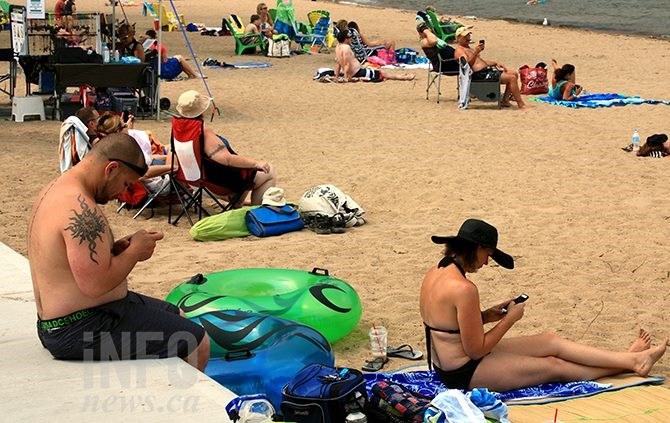
FILE PHOTO
(STEVE ARSTAD / iNFOnews.ca)
February 23, 2025 - 7:00 PM
Some people think the Lower Mainland wears the crown for most grey days per year, and Kelowna is a sunshine capital by comparison but that isn't really the case.
Vancouver typically gets around 1,932 hours of sunshine per year, and Kelowna gets just a few more around 1,943.
For context Juneau, Alaska gets about 1,523 hours of sun a year and Athens, Greece gets an impressive 2,769 hours of sun a year.
Environment Canada meteorologist Trevor Smith said the valley geography creates a phenomenon where the difference in air temperature between the valley bottom and the mountain tops creates some pressure that acts like a lid and traps moisture from the lake creating a layer of clouds.
“The valley cloud tends to be favoured under kind of stagnant conditions when we've got high pressure over the valley and there's a temperature inversion somewhere near the mountaintops,” he said. "Moisture evaporates from the lakes and it's kind of mixing upwards, but then it hits this lid somewhere there in the mountaintops. And that's kind of the base of that inversion is where the cloud layer forms."
In December Kelowna gets around 56 hours of sun, while in July the city has about 297 hours of sunshine.
“It's not a feature of the summer because you get so much more heating near the ground. You don't get those temperature inversions near the ridge tops,” Smith said.
READ MORE: Four-in-five consumers shopping Canadian in wake of American tariff threat: poll
Environment Canada stopped directly tracking sunshine hours roughly 20 years ago, and while others continue to track it Smith said it would be helpful data to collect.
“To the extent we want to document climate change, if there is change to things like cloud cover we can't do that because we just don't have the data,” he said.
The Okanagan’s relatively mild winter still makes it an attractive place for folks who hate the cold.
In December of 2024, there were 4.1 million Canadians who came back from trips abroad, according to Statistics Canada.
Kelowna has its fair share of snowbirds, but Big White Ski Resort’s vice president Michael J. Ballingall said more people stuck around this winter.
“We have a lot more people that haven't gone south. Normally, we would see the snowbirds come back in early March to mid-March and ski until the end of the season. We actually saw them come back earlier or they didn't go at all. So our club 65, those over 65 are seniors, there's a lot more of those this year,” he said.
Whether or not the weather in Kelowna is too dark and grey in the winter, or the city’s mild temperatures make up for it, at least Kelowna gets a few more hours of sunshine than Vancouver.
To contact a reporter for this story, email Jesse Tomas or call 250-488-3065 or email the editor. You can also submit photos, videos or news tips to the newsroom and be entered to win a monthly prize draw. Find our Journalism Ethics policy here.
We welcome your comments and opinions on our stories but play nice. We won't censor or delete comments unless they contain off-topic statements or links, unnecessary vulgarity, false facts, spam or obviously fake profiles. If you have any concerns about what you see in comments, email the editor in the link above. SUBSCRIBE to our awesome newsletter here.
News from © iNFOnews, 2025